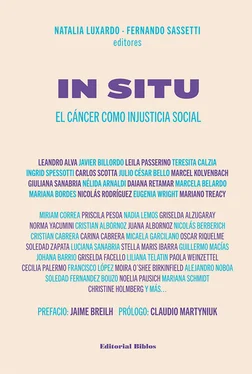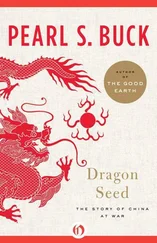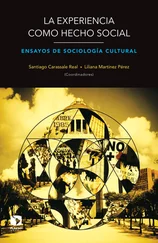Virchow was, however, a scholar of his time. We should allow social medicine to reach the 21 stcentury and go beyond health statistics and the objective measurement of populations. Medical anthropology has given rich testimony to the many entangled ways in which power relations and knowledge production work to create (health) inequities. To improve the health of all and to tackle the social and political origins of disease, we would do well to consider medical anthropology as a basic science of medicine through which we can learn about disease, as it is produced and enacted within social and political communities.
Perhaps this is the most important legacy of Rudolf Virchow. Let us not be constrained by a cosmology that may hinder a thorough investigation into the causes of suffering in society and medicine.
ACKERKNECHT, E.H. (1981), Rudolf Virchow: Doctor, Statesman, Anthropologist; Virchow - Bibliographie, 1843-1901 , New York, Arno Press.
ADAMS, V., D. BEHAGUE, C. CADUFF, I. LÖWY & F. ORTEGA (2019), “Re-imagining global health through social medicine”, Global Public Health , 14 (10). https://doi.org/10.1080/17441692.2019.1587639.
ANDREE, C. (2002), Rudolf Virchow: Leben und Ethos eines großen Arztes , München, Langen Müller.
BERKELEY UNIVERSITY OF CALIFORNIA, Department of Anthropology. Medical Anthropology. https://anthropology.berkeley.edu/graduate-program/info-prospective-students/concentrations/medical-anthropology.
BERLINER GESELLSCHAFT FÜR ANTHROPOLOGIE, ETHNOLOGIE UND URGESCHICHTE (2018), “Rudolf-Virchow-Förderpreis der Berliner Gesellschaft für Anthropologie, Ethnologie und Urgschichte”. http://www.bgaeu.de/rudolf_virchow_foerderpreis.html.
BOLTE, G., C. BUNGE, H. HORNBERG, H. KÖCKLER, A. MIELCK (eds.) (2012), Umweltgerechtigkeit. Chancengleichheit bei Umwelt und Gesundheit: Konzepte, Datenlage und Handlungsperspektiven , Bern, Hans Huber.
DAVID, H. (2002), Rudolf Virchow - Naturwissenschaftler, Sozialmediziner und Berliner Stadtpolitiker und Lehren aus seinem Wirken für unsere Zeit , Vortrag vor dem Plenum der Leibnitz-Sozietät.
FEDDERSEN, L.H. (2010), “Die Darstellung Rudolf Virchows in der Vossischen Zeitung im Zeitraum vom 1. Januar 1844 bis zum 31. Dezember 1865”, dissertation, Frankfurt an der Oder, Europa-Universität Vidrina Frankfurt an der Oder. https://opus4.kobv.de/opus4-euv/frontdoor/deliver/index/docId/34/file/Feddersen_Lars_Harald.pdf.
Germany: Country Health Profile 2019 (2019), Paris, OECD Publishing. 1 online resource (State of Health in the EU).
HARVARD MEDICAL SCHOOL, Blavatnik Institute Global Health & Social Medicine. Medical Anthropology. https://ghsm.hms.harvard.edu/research/medical-anthropology.
HUBENSTORF, M. (2015), “Sozialhygiene, Staatsmedizin, Public Health – Konzeptwandel oder deutscher Sonderweg?”, in U. Schagen & S. Schleiermacher (eds.), 100 Jahre Sozialhygiene, Sozialmedizin und Public Health in Deutschland , Berlin. https://www.soziale-medizin.de/CD_DGSMP/PdfFiles/Texte/M_H.pdf.
JOHNS HOPKINS SCHOOL OF MEDICINE, Department of The History of Medicine. Graduate Program. https://hopkinshistoryofmedicine.org/content/graduate-program.
KRIEGER, N. (1994), “Epidemiology and the web of causation: Has anyone seen the spider?”, Social Science & Medicine , 39 (7).
– (2014), Epidemiology and the People’s Health: Theory and context , Oxford University Press.
LAMPERT, T. (2005), Schichtspezifische Unterschiede im Gesundheitszustand und Gesundheitsverhalten , Berlin, BZPH, Geschäftsstelle.
LAMPERT, T. & U. KOCH-GROMUS (2016), “Soziale Ungleichheit und Gesundheit”, Bundesgesundheitsblatt , 59 (2). DOI: 10.1007/s00103-015-2306-3.
LEHNE, G. & G. BOLTE (2019), “Socioeconomic status and change in sports activity among middle-aged and older men and women: Evidence from the German Ageing Survey”, Journal of Public Health , 41 (4). https://academic.oup.com/jpubhealth/article-abstract/41/4/689/5139674?redirectedFrom=fulltext.
LOCK, M. (2006), Encounters with Aging: Mythologies of Menopause in Japan and North America , Berkeley, University of California Press.
MCGILL UNIVERSITY, Department of Anthropology. Graduate Studies. https://www.mcgill.ca/anthropology/graduate#Medical.
MICHEL, B. (2015), “Die Entwicklung von Public Health in Westdeutschland seit dem 2. Weltkrieg”, Public Health Forum , 23 (1): 4-5. DOI: 10.1515/pubhef-2015-0003.
OECD (2019), Health at a Glance 2019 , Germany. https://www.oecd.org/germany/health-at-a-glance-germany-EN.pdf.
PORTER, D. (2006), “How Did Social Medicine Evolve, and Where Is It Heading?”, PLoS Medicine , 3 (10). https://doi.org/10.1371/journal.pmed.0030399.
ROELCKE, V. (2017), Vom Menschen in der Medizin: Für eine kulturwissenschaftlich kompetente Heilkunde , Psychosozial Verlag GbR.
SIMON, M. (2016), Das Gesundheitssystem in Deutschland.: Eine Einführung in Struktur und Funktionsweise , Göttingen, Hogrefe Verlag.
SOCIETY FOR MEDICAL ANTHROPOLOGY (2018), “Rudolf Virchow Awards-Critical Anthropology for Global Health”. http://www.medanthro.net/2019-rudolf-virchow-awards.
VIRCHOW, R. (1849), “Die naturwissenschaftliche Methode und die Standpunkte in der Therapie”, Archiv für pathologische Anatomie und Physiologie und klinische Medicin , 2.
– (1859), “Die Cellularpathologie und die physiologische Heilkunde”, Archiv für pathologische Anatomie und Physiologie und klinische Medicin , 16.
– (1902), Zur Erinnerung: Blätter des Dankes für meine Freunde , in Virchow’s Archiv für pathologische Anatomie und Physiologie und für klinische Medizin , Bd. 167.
– (1922), “Ueber die neueren Fortschritte in der Pathologie (1867)”, in R. Sudhoff (ed.), Virchow und die Dutschen Naturforscherversammlungen , Leipzig, Akademische Verlagsgesellschaft mbH.
– (2012), “Report on the typhus epidemic in Upper Silesia, 1848”, American Journal Public Health , 96 (12). DOI: 10.2105/ajph.96.12.2102.
*Professor for Social Medicine and Epidemiology, PhD (Dr. phil) in Medical Anthropology (Humboldt University Berlin, Germany) and Master of Public Health in Epidemiology (University of Illinois at Chicago, S, Chicago, IL, USA). christine.holmberg@mhb-fontane.de.
Natalia Luxardo
El cáncer es una enfermedad de las desigualdades. La lucha contra estas desigualdades es una cuestión de justicia social y derechos humanos.
Agencia Internacional de Investigaciones sobre Cáncer
Este capítulo constituye el cierre de la primera parte, dedicada a revisiones de antecedentes que definen un campo de discusión específico en el que inscribimos el estudio. Lo cerramos llegando al fundamento del título del libro –y de toda la investigación– como se resume en el epígrafe desde la principal agencia de investigación de esta enfermedad: entender el control del cáncer como una cuestión de justicia social y derechos humanos. Esto implica alinearse con las perspectivas que argumentan que los resultados relativos a la carga y morbimortalidad de esta enfermedad no están aleatoriamente distribuidos sino que obedecen a determinados arreglos sociales, políticos y económicos de las sociedades. Al respecto, la Agencia Internacional de Investigaciones sobre Cáncer (IARC, por su sigla en inglés) muestra que existen desigualdades sociales en el continuum del control del cáncer con relación a diferencias sistemáticas que se encuentran entre los grupos sociales y que incluyen las exposiciones a factores de riesgo específicos, la vigilancia y el monitoreo de los datos que se producen sobre cáncer, el acceso a tamizajes que permitan diagnosticar lesiones precancerosas y evitar la enfermedad, el acceso a diagnósticos tempranos que posibiliten detectarlos a tiempo, la probabilidad de que reciban tratamientos oportunos y efectivos para cánceres tratables y curables, el acceso a cuidados paliativos, entre otros.
Читать дальше












